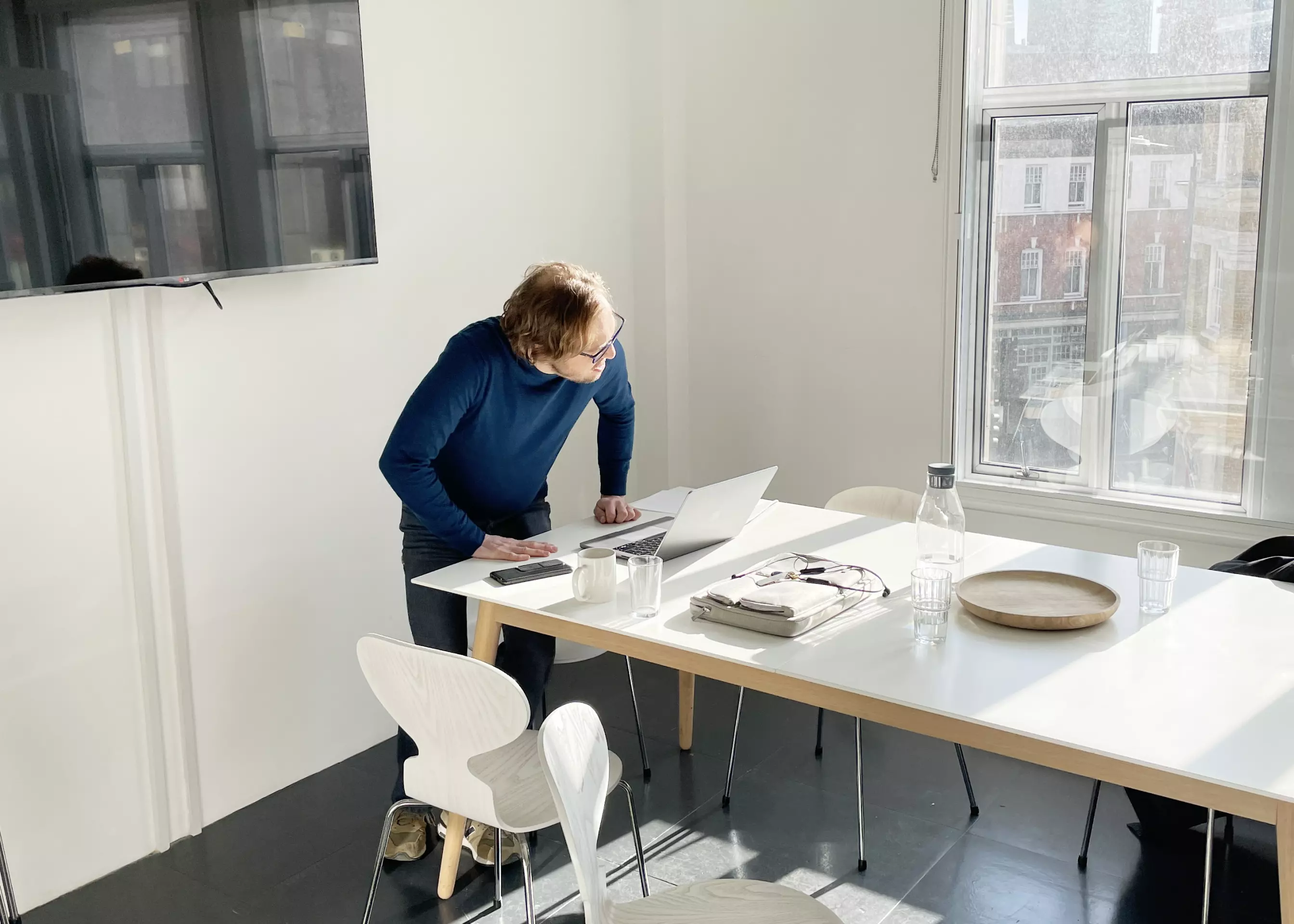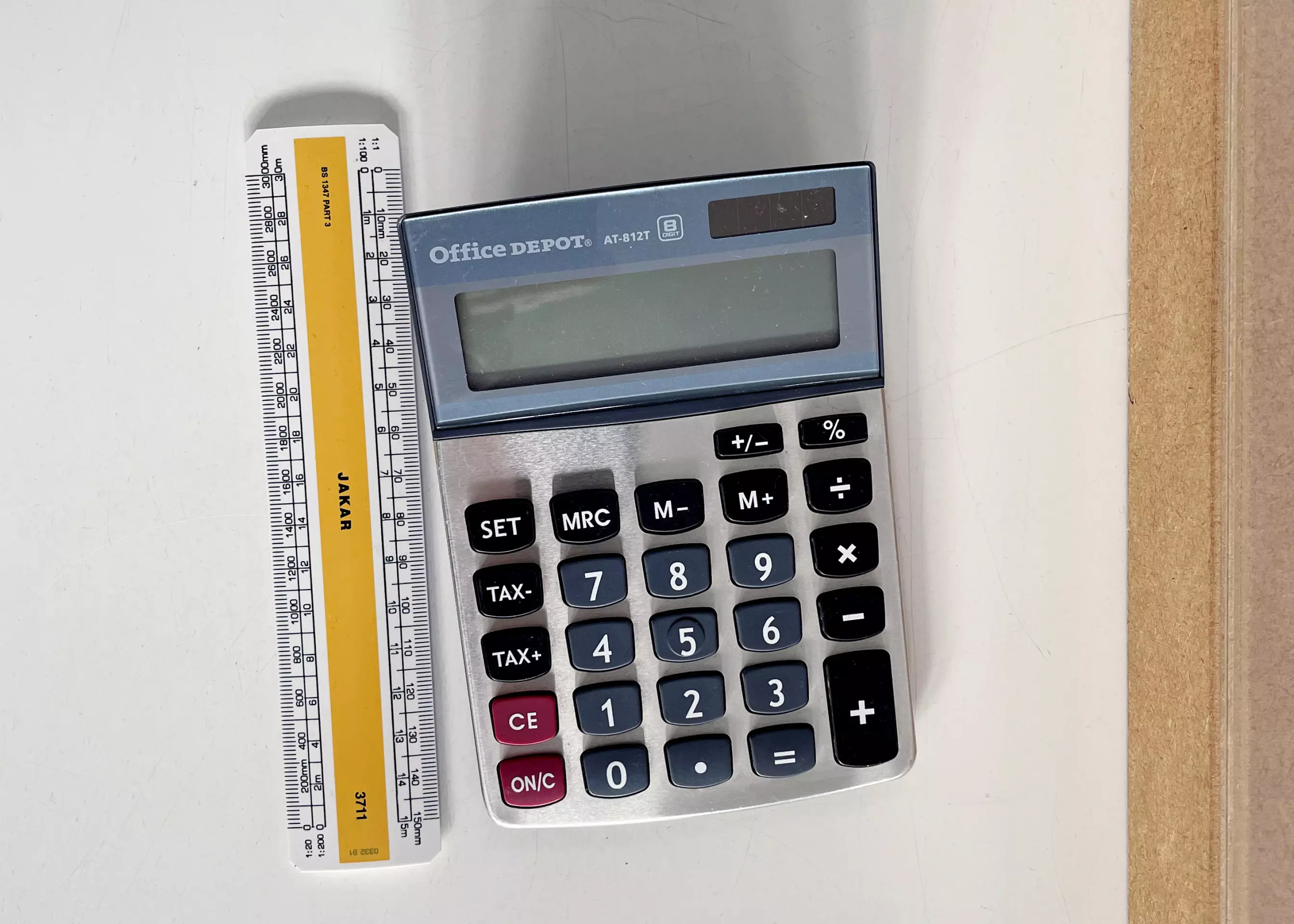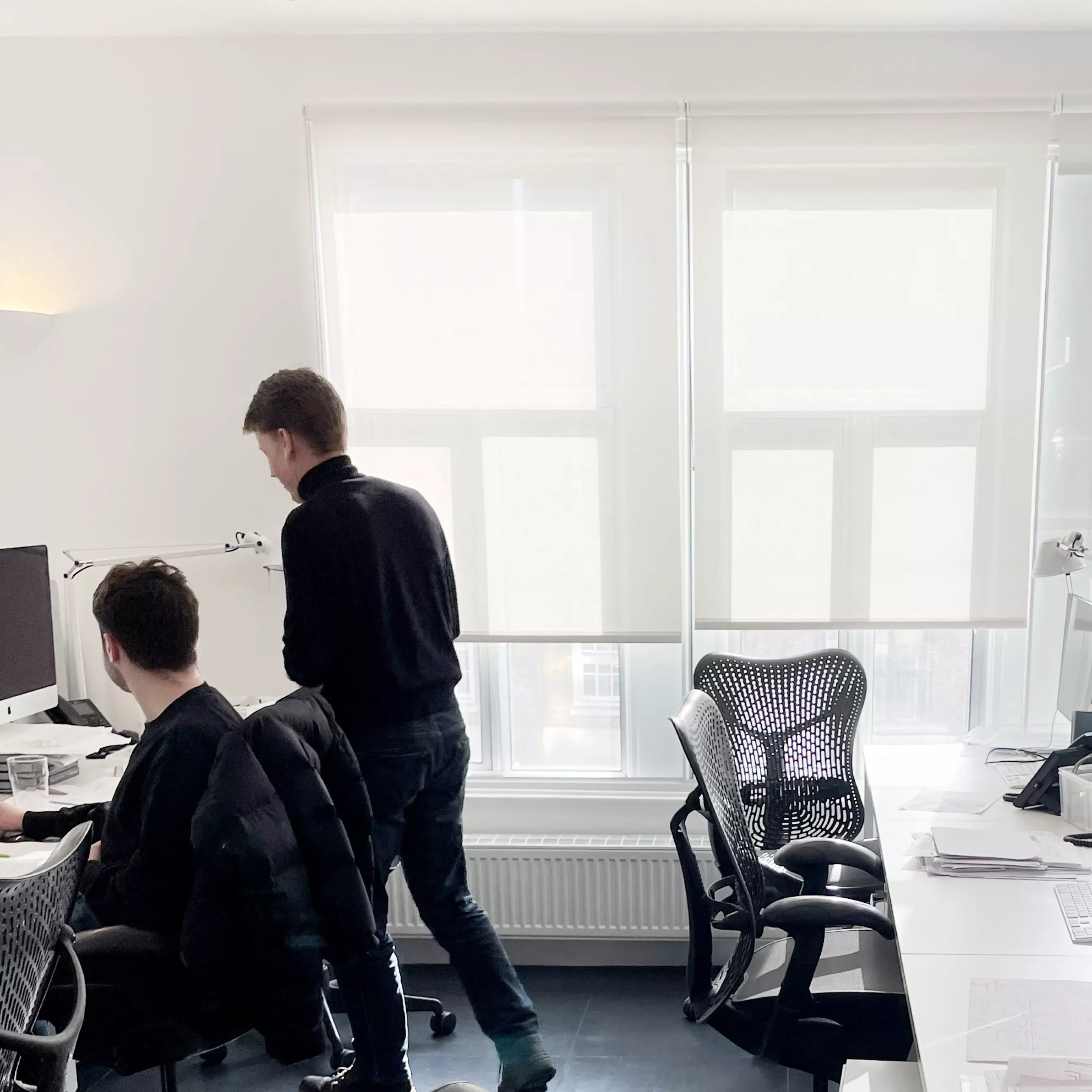
Having made the first website for Paul Archer Design over ten years ago, we’ve recently launched the team’s new site. We sat down with Director Richard Gill at their studio in East London to talk about life at PAD.
Interview
First, could you start by telling us a bit about what projects you have been working on recently?
We have recently completed a garden studio for a DJ. The studio is split over three levels, including a subterranean studio space. The interior has been clad in birch faced plywood. Externally a mixture of dark timber and common bricks have been used to blend in with the urban theme.
We’re excited to see the basement and structural works nearing completion at Hebron House. It’s thrilling to see the form take shape, our focus is currently on the glazing package which is due to be delivered in July. We have several other projects taking shape on site. It’s rewarding participating in the realisation of our designs.
Looking forward, the office is currently working on production information and drawings for a new build house in Kent. We also have several feasibility studies for projects of varying shapes and sizes. It’s a busy time for us at present.

As the work we make ends up in the digital world, we’re always interested to know how physical spaces influence the work of our collaborators. With that in mind, what does a workspace mean to you?
As Architects we are often designing, developing our schemes using various software and applications. Presentations are more often than not via a screen. In some cases VR has been employed. A high proportion of architectural designs never get built for various reasons. With the exception of the usage of material samples and physical aids along the way. It’s only when we get to site that things become tangibly ‘real’.
There’s often a magical moment on a project when what was once a design idea, represented as lines on a PDF now stands there in full tactile, physical form.


Can you talk a little about how important collaboration is for your practice? Both within your team and with clients.
Collaboration is everything when it comes to Architecture as there are so many people involved directly and indirectly along the way when procuring buildings; be it clients, neighbours, planners, consultants, contractors, suppliers etc. You could have the best, most complete drawings ever produced, yet that alone does not guarantee a successful piece of Architecture.
Clients
Most of our clients are private home owners who come to us with little knowledge of how the construction industry works. Our job is to work with the client and navigate through the various design stages. Working collaboratively we will bounce ideas off each other. Given that we are often working on private homes, the solutions are often very personal and unique.
Teamwork
As with any organisation there’s a hierarchy of seniority. As a manager I’ll tend to lead the design process working with a project architect and assistant(s). Everyone is invited to put design ideas forward. Team members are encouraged to take ownership of design ideas. Presentations are held on a weekly basis in the office, so that knowledge and experiences can be shared. It’s important for everyone to have asense of what is going on in the practice.



How does the space in which you work contribute to the development of your practice?
In the aftermath of lockdown and covid restrictions we have found that most team members want to be in the office (though we are still cautiously using a staff rota). Having a pleasant and welcoming working environment is very important. We are very happy with our location, there seems to be a buzz about the area that resonates with the team. The social aspect of work seems to have been the key point most people raise when asked. That is why we are looking forward to the return of PAD social events.


Considerations of workspaces have shifted significantly in the last couple of years. Have you found the traditional idea of a workspace has changed for you/your team?
I think flexibility is here to stay. This can be especially useful for those with family commitments. However, if covid has taught us anything, it’s the importance of working together. The youngsters really suffer when working solo, as there’s so much more you learn when you're surrounded by people with experience. Trying to design remotely simply doesn’t work as well. Yes it can be done. Yet it’s a poor substitute for meeting in person around a table with tracing paper and pens.
Finally, could you give us three essential items for your day-to-day work environment?
Good lighting, daylight: As creatives we spend a lot of time questioning, thinking and testing possible solutions to the problems we are challenged with. A well lit environment helps with the creative process.
Good company: Be it as simply as the need for companionship, or to bounce ideas off or for support on specific issues. We need people, after all we are social animals, designing buildings for people to live and work.
Good coffee: Goes without saying.



